Walking the Via Dolorosa: History, Stations, and Spiritual Meaning
Few experiences in Jerusalem move pilgrims as deeply as walking the Via Dolorosa, the “Way of Sorrows.” This ancient path through the Old City is believed to trace the final journey of Jesus Christ, from his trial before Pontius Pilate to his crucifixion and burial. Each step offers a chance to reflect on the Passion, connect with centuries of Christian devotion, and feel part of a story that has shaped faith for two millennia.
A Path Steeped in History
The Via Dolorosa winds for about 600 meters (roughly 2,000 feet) through the Muslim and Christian Quarters of Jerusalem’s Old City. Its current route was formalized during the Crusader period in the 12th century, although devotion to Jesus’ Passion began earlier, when Byzantine pilgrims sought to walk where He had once walked.
Tradition holds that the path begins near the Antonia Fortress, where Pilate condemned Jesus to death. Over time, the route evolved, with Franciscan friars — custodians of many Holy Land sites since the 13th century — helping shape the Stations of the Cross we recognize today. Today’s Via Dolorosa is marked with plaques and chapels, guiding pilgrims through moments of suffering, courage, and redemption.
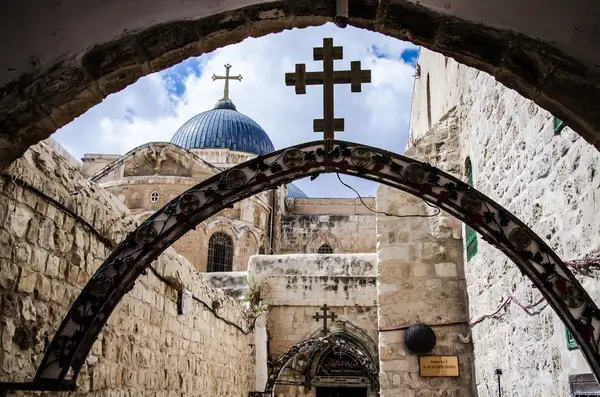
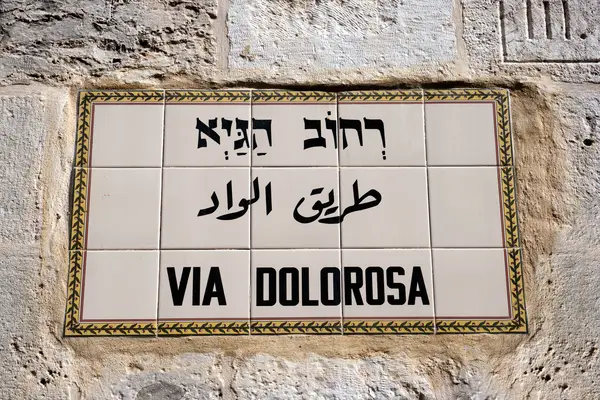
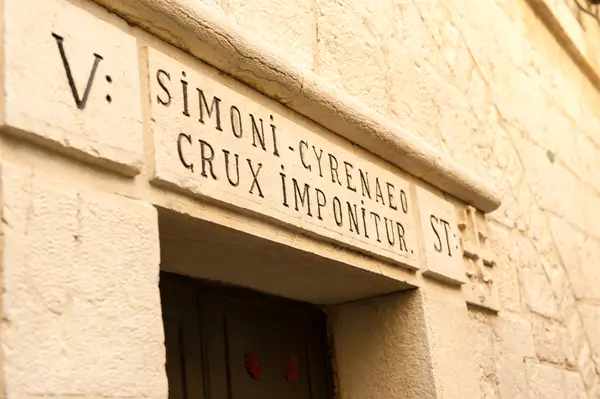
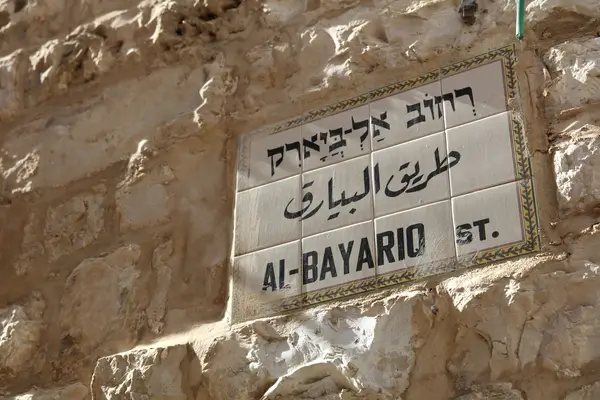
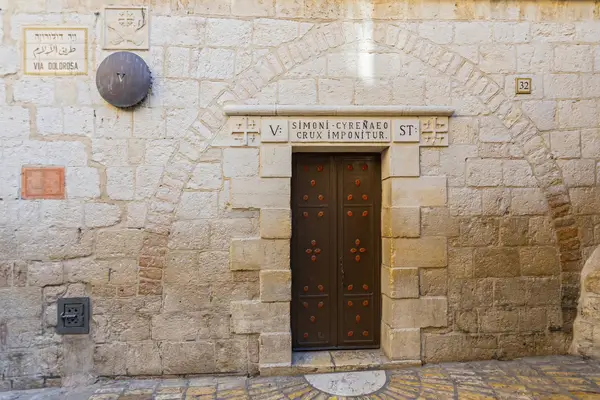
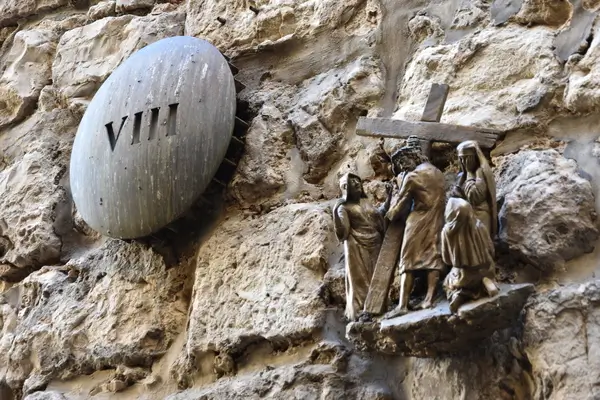
Fourteen Stations of the Cross
The walk follows fourteen Stations, each recalling a key moment of Christ’s Passion:
- Jesus is condemned to death — near the site of Pilate’s praetorium.
- Jesus takes up His cross.
- Jesus falls for the first time.
- Jesus meets His Blessed Mother — a quiet The spot where many pause to pray.
- Simon of Cyrene helps carry the cross.
- Veronica wipes the face of Jesus — legend says His image remained on her cloth.
- Jesus falls the second time.
- Jesus speaks to the women of Jerusalem — words of compassion amid suffering.
- Jesus falls a third time.
- Jesus is stripped of His garments — the start of Calvary’s agony.
- Jesus is nailed to the cross.
- Jesus dies on the cross — the heart of Christian faith and salvation.
- Jesus’ body is taken down and placed in the arms of His Mother.
- Jesus is laid in the tomb — within the Church of the Holy Sepulcher.
The final five stations (10–14) are inside the Church of the Holy Sepulcher, one of Christianity’s holiest places. Pilgrims often light candles, kneel, or touch the Stone of Anointing and the Tomb of Christ, finding moments of profound prayer and gratitude.
Experiencing the Walk Today
The Via Dolorosa is not just a historic trail — it’s a living act of worship. Every Friday, Franciscan friars lead an open-air Stations of the Cross procession that anyone can join. Hymns, prayers, and scripture readings echo through the narrow streets, blending the city’s ancient stones with timeless devotion.
Pilgrims walking privately often start early in the morning, when the streets are quieter, or late in the day for a more meditative atmosphere. Comfortable shoes are a must — the cobblestones are uneven — and a guide or well-marked map can help bring each station’s story to life.
The Spiritual Meaning
To walk the Via Dolorosa is to step into the mystery of the Passion. Each station invites reflection on suffering, love, sacrifice, and hope. Pilgrims carry personal prayers: for healing, forgiveness, gratitude, or strength. Many say the journey deepens their connection to Christ’s humanity and to the universal Christian story of redemption.
More Christian sites in Israel
